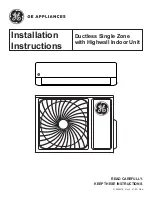
YORK
5587001-YSG-A-520 | Start-Up & Operation Guide
The Premier rooftop units are highly sophisticated
machines. YORK has leveraged the latest advances
technology has to offer in developing these units
The base unit is cooling only with a variable frequency
drive (VFD) controlled supply fan. There are a multi-
tude of factory installed options that can be selected in
addition to the base unit for job-specific customization.
Premier units can also have
one-off additions
, com-
monly known as a special quote (SQ), to further cus
-
tomize the unit for a specific job site requirement.
30
• When the user answers the question with
yes, the high fire stage is marked as passed,
the unit controller commands furnace X high
and low fire stages OFF and commands the
modulating gas heat command to 0% (fur-
nace 1 only), and waits 30 seconds. The
start-up wizard skips to the next furnace test.
• When there are any staged gas heating
stage X safety trips during operation, both
low and high fire stage X are stopped, the
unit controller commands the modulating
gas heat command to 0% (Furnace 1 only),
low or high fire stage X check is recorded as
failed, and the start-up wizard skips to the
next furnace test.
The unit controller cycles through each modulated
gas furnace recording the pass/fail for each stage.
The results are compiled into a report and saved in
the non-volatile memory on the unit controller. These
results can be exported via USB.
Sequences of Operation
NOTE:
MB = Main Board CB1 = Condenser Board 1
CB2 = Condenser Board 2 OB = Options Board
CTB/BSIB = Building System Interface Board
LD27994
Figure 3: Control Board Locations
Control Boards
The following control boards are standard on every unit:
• User interface display board (
)
• Main control board (
)
,
The rooftop unit consists of several control boards that
communicate via an internal Modbus network. This
Modbus network allows the boards to act as one unit
controller.
The sequences of operation for all standard and op-
tional components or systems are covered in the fol-
lowing sections.
















































